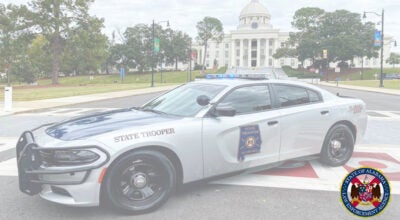Weather week focus: NOAA weather radios
Published 12:00 am Friday, February 21, 2014
Today marks the final day of Severe Weather Awareness Week in Alabama.
Each day this week, The Star-News has highlighted a different type of severe weather safety. Today, the focus is on the NOAA Weather Radio – the device officials agree to be the best warning of inclement weather.
NOAA weather radios are sometimes called the voice of the National Weather Service, according to the NWS in Birmingham.
NOAA Weather Radio All-Hazards provide continuously updated weather information, 24 hours a day, every day of the year.
National Weather Service staff prepares weather information that is normally broadcast in a three-to-five-minute cycle. This information includes forecasts, warnings, current conditions and more.
To receive broadcasts from the NWS, a special radio capable of receiving signal in the “very high frequency” public service band is required.
Covington County EMA Director Susan Harris said, not only is a NOAA Weather Radio the best choice for safety during inclement weather, but the CCEMA will soon be allowing locals a chance to purchase the devices and learn how they operate.
“You can get (a NOAA Weather Radio) at your electronics stores, but we are having our yearly Emergency Preparedness Expo March 8 at the Covington Kiwanis Center,” Harris said. “We will have them for sale, and we will have people there to program them and explain how they work.”
The NOAA Weather Radio is useful anytime, but it is most important during severe weather. When threatening weather develops, normal broadcasts are interrupted by important severe weather information. Watches, warnings and special statements are given the highest priority and are updated frequently.
In an emergency, each NOAA Weather Radio All-Hazards station will transmit a warning alarm tone signal followed by information on the emergency situation.
This signal is capable of activating specially designed receivers by increasing the volume or producing a visual or audible alarm.
Not all weather band receivers have this capability, but all radios that receive NOAA Weather Radio All-Hazards can receive emergency broadcasts. The warning alarm device is tested each Wednesday and Saturday, usually between 11 a.m. and noon, weather permitting.
A feature available in newer Weather Radio All-Hazards receivers called “SAME,” which stands for specific area message encoding, allows radios to be programmed for the reception of watch and warning messages for certain counties in a specific area, without disturbing users for warnings outside of the programmed counties.
Another source of weather information is the Emergency Alert System, also known as EAS, which replaced the emergency broadcast system. The EAS is a system of communication links that utilize data in a digital form. It is a reliable means of linking the National Weather Service, emergency management agencies and various broadcast media together.





